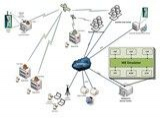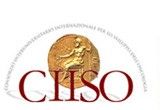
-
StatusCompleted
-
Status date2014-11-17
Primary prevention promoting the adoption of a healthy lifestyle is becoming an integral part of a number of national healthcare systems programmes. The presence of a comprehensive methodology for disease prevention, surveillance of behavioural risk factors and lifestyle adoption plays an important role in facilitating the implementation of a healthcare prevention programme.
Telemedicine, due to its ability to gather, transfer, share and process user’s data will very likely become a fundamental enabler for the implementation of such a methodology. The “universality” of the proposed services becomes an imperative and a driver for the Project: all people shall have the same opportunity to access services that promote the diseases prevention and healthy life style.
The integration of the satellite network with other types of networks (XDSL, Wifi, GPRS, etc.) as redistribution systems can provide a competitive solution in specific instances. The possibility to exploit the paradigm one terminal with satellite communications – many users for all the types of terminals in the ASSISTED and SELF-CARE scenarios, helps to optimize the usage of communication resources and lower the operating expenses for terminals and therefore for users.
The TESHEALTH project is dedicated to developing, implementing, qualifying and validating a telemedicine system promoting the use of satellite communications aimed at reducing the impacts of chronic diseases, improving life styles and empowering citizens to adopt a healthier behaviour. The ambitious target can be broken down into a series of specific objectives:
- Increase the citizen’s control on a safe and healthy behaviour, providing instruments and services for self-care and a permanent and pervasive link between the individual and the physician environment;
- Provide the exchange of heterogeneous health data concerning the health of the citizen among different healthcare providers such as hospitals, pharmacies, clinical labs, etc.;
- Automate where possible the complex healthcare workflow, drastically reducing response times, manual intervention and mistakes (such as non compliance to clinical protocols);
- Deploy an interconnected system using a integrated, heterogeneous telecom network (e.g. terrestrial and satellite) capable of providing an adequate solution for a connected healthcare prevention programme, regardless of the geographical location of the citizen, for a universal service in the support of disease prevention and healthy lifestyle promotion;
- Facilitate the collaboration among healthcare actors and the citizen whenever and wherever required;
- Validate the technical and operational capabilities of the system with end users and a cooperation with organizations involved in healthcare prevention programmes.
The TESHEALTH project addresses two healthcare macro markets: “ASSISTED” and “SELF-CARE”, which means two types of Target Customers, respectively “Professionals” and “Consumers”.
The project, in fact, in fact, aimed at satisfying both the technological improvements currently required by the Market (i.e. Integrated E-Health Systems and Remotely Hosted Services) and the priorities highlighted by Healthcare Public Institutions. The “universality” of the proposed services becomes an imperative and a driver for the Project: all people shall have the same opportunity to access services that promote disease prevention and a healthy life style. The satellite component enables the service deployment in remote and underserved areas, and allows an end-to-end control.
TESHEALTH aims at providing an answer to the various pressing pains and needs that are currently affecting the demand of Healthcare services around the world. The healthcare needs and the main priorities registered in Italy for reducing the impact of chronic diseases on the population, improving life styles and empowering the citizens to adopt better behavior are the same registered at a European level:
- As the age of the population in EU increases, as the demand of health and well-being increase and technologies converge, a critical opportunity is emerging to transform healthcare as we know it,
- TESHEALTH is dedicated to changing the way we think about telemedicine and healthcare by developing product and services that allow a care that is:
- Comprehensive (data-driven: collecting all medical data including prevention, treatment, preferences),
- Coordinated across providers including outside the traditional healthcare setting,
- Personalized,
- Planned.
- With TESHEALTH we can create an ecosystem of connected information and services which deliver results that add real value for professionals and the general population,
- TESHEALTH products and services will provide net saving across the value chain by being easy-to-use and to maintain, less labor-intensive to implement,
- TESHEALTH is an end-to-end platform that makes use of satellite communication as the quickest, flexible and safest controlled way to allow international expansion.
The TESHEALTH Project aims to specify and develop an integrated system of e-Health applications and services with the aims to:
- Increase the person’s control on safety, by providing instruments and services for self-care and for creating a link between the individual and the physician environment anytime and anywhere;
- Ensure the exchange of heterogeneous health data among different healthcare service providers (connected health) such as hospitals, pharmacies, labs and insurance companies;
- Automate the complex healthcare workflow;
- Deploy an integrated heterogeneous telecommunication network including satellite.
The project development activities will be focused on the following elements:
- Service ICT Platform, based on the “Health Integration Engine” (HIE) that will allow the interoperability among vertical applications and then the exchange of the relevant data implemented according to open standards.
- Service applications for:
- Consumer market: Interactive Application used by the individual at the Health Point to do a general health status assessment (opportunistic screening), Personal Health Record- PHR for the collection of health data from any sources: medical data acquired by Health Point and transmitted to the PHR through the HIE, clinical or general data acquired directly by the user at home through portable medical devices or entered manually in the system,)
- Professional market: Clinical Study Application (for healthcare professionals cooperation) and Clinical Health Record with collaborative environment (for healthcare professionals and Institutions).
- Integrated and interoperable communication network (satellite, terrestrial, GPRS, Wi-Fi, etc.) The network will be studied to satisfy the required applications quality of service over connections provided by heterogeneous networks, optimized in order to minimize the offered service cost.
- Risks assessment algorithms and user-friendly behavioural change programmes, based on medical evidence, to facilitate the user to create their own health programme one which they can stick with and monitor their progress.
The overall TESHEALTH project was initially planned to be developed in two successive phases for a total duration of 24 months, but has been reduced to only one phase. The objective is to formalise the User requirements, propose a System Architecture Concept, implement the heterogeneous communication network including the satellite based component, realise a fully functional demonstrator and develop a pre-commercial product for the self-care market.
The project completed its activities at the end of March 2012.
For the pilot Operations purposes, the satellite ASTRA2Connect terminals (for Assisted and Self-Care Services), have been installed. The pilot of the Assisted service tested the Satellite ICT services in two real scenarios: Data Recollection for Clinical Trials to monitor in realtime the quality of the acquired clinical data during Echo Cardiographic exams collected for clinical studies purposes, and Remote Medical Recording to provide effective support to remote medical recordings and second opinion.
The pilot evidenced that the use of the satellite access technology for the provision of Assisted services, which involves video-conference sessions and data transmissions between two specialists for clinical studies and tele-consultation purposes, is limited by the required uplink bandwidth. In fact, a positive evaluation of these services, requires about 360kbps of available uplink bandwidth, which is not guaranteed by a commercial satellite service profile (as the one adopted for the ASTRA2Connect satellite access). The satellite providers should offer different plans that include real broadband symmetrical connectivity (from 2 Mbps up to 10 Mbps).
The pilot of the Self-Care scenario started in October 2011 and is still running at the time of writing of this report (May 2011). For the validation of the services, data collected at the Health Points installed into two Pharmacies from November 2011 to March 2012 were utilised, together with the end users entries in the Personal Health Record developed in the frame of the project, called VIVA.
As results of the pilot stage, 1468 tests were performed, 136 users were registered into the system, 2335 measurements were recorded, 75 reports were sent via sms and 118 reports via email. The results obtained from the evaluation of the User Experience through the questionnaires submission, were quite good: 50% of people considered use of the health point easy enough and 48% very easy; 30% completed the whole program in 10 minutes and 36% in less than 10 minutes; 32% considered the Health Point services useful and 36% considered them very useful for Health; 54% of people made single measures (Blood pressure, weight), and 44% completed the health program. VIVA utilization highlighted the importance of this type of media for the continuous long term support for maintenance of life style changes and to control multiple risk factors. VIVA is currently used by AVIS Milano in the frame of a prevention program for its members, and by a Multinational manufacturer for its employees.





